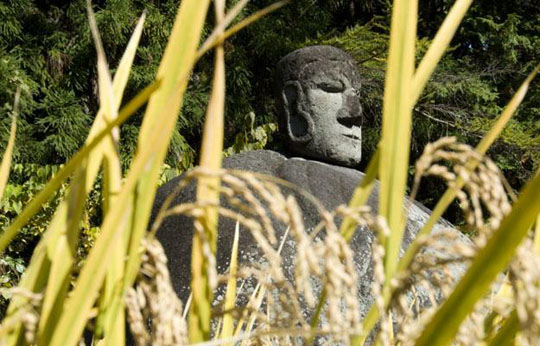On the edge of town, by a bridge over a stream amid fields of rice stubble, there is a roughly hewn stone Buddha. The path to it is well worn, and though someone has left an offering of the last of the season's quinces at the base of the statue, today there's no one else around and only the sound of the river and the statue's presence for company.
It's a peaceful spot, infused with legend: Once, long ago, the statue is said to have bled when stonecutters chiseled into the rock, and so the Manji no Sekibutsu (Manji Stone Buddha) has been left in peace to weather out the centuries undisturbed.
Shimosuwa is like that. It's an old place, where myth brushes against the present. In the surrounding Nagano Prefecture hills are obsidian mines worked since prehistoric Jomon times for their hard, dark, volcanic glass used not only for jewelry but also for razor-edged spear points and ax blades that were valued every bit as much.



















With your current subscription plan you can comment on stories. However, before writing your first comment, please create a display name in the Profile section of your subscriber account page.